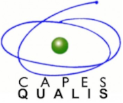Expansion of secondary education in Turkey after the Second World War (1945-1964)
DOI:
https://doi.org/10.51438/2313-9277.2024.25.2.e039Keywords:
Secondary education, High school, Expansion of education, General high school, Vocational high schoolAbstract
This article aims to reveal the expansion of secondary education in Turkey between 1945 and 1964. The development of secondary education in Turkey up to 1945 has been studied using Müller's concept of systematisation. The expansion of secondary education between 1945 and 1964 has been analysed by considering the characteristics of education systems conceptualised by Ringer as inclusiveness, progressivism, and segmentation. The development of secondary education between 1945 and 1964 was studied by focusing on the Turkish-US interaction. The research came to the following conclusions: Although efforts were made to expand it until 1965, secondary education was not inclusive in terms of gender and geographical region. In Turkish secondary education, the schools that students attend are largely determined by the social strata of their families. In this respect, it should be said that progressivism was weak in the process of expanding high schools until 1965. From their emergence until 1965, high schools were divided into schools or programmes that differed both in their curricula and in the social strata of their students. Segmentation is quite evident in high schools. Until the 1940s, general high schools were accessible to the wealthy and urban professionals. After the 1940s, Vocational Institutes were established, attended mainly by peasants and workers.
Downloads
References
Akyüz, Y. (2021). Türk eğitim tarihi M.Ö. 1000-M.S. 2021 (34ª ed.). PegemA.
Armaoğlu, F. (2012). 20. yüzyıl siyasî tarihi 1914-1995 (18ª ed.). Alkım.
Armaoğlu, F. (2017). Türk Amerikan ilişkileri 1919-1997. Kronik Kitap.
Avcıoğlu, D. (1973). Türkiye’nin düzeni: Dün, bugün, yarın (Vol. 1). Bilgi Yayınevi.
Bal, R. (2020). Türkiye’de ilk fen lisesinin açılış süreci, bilimsel gelişmeler ve değerlendirmeler. Kesit Akademi Dergisi, 6(25), 481-496. https://doi.org/10.29228/kesit.47335
Başgöz, İ., & Wilson, H. E. (1968). Türkiye Cumhuriyetinde eğitim ve Atatürk. Dost.
Boratav, K. (1963). Gelir dağılımı ve tüketim eğilimi. Ankara Üniversitesi SBF Dergisi, 18(1), 15-61.
Boratav, K. (2010). Türkiye iktisat tarihi (1908-2007). İmge.
Çelik, H. (2023). Cumhuriyet devri eğitim politikalarına ABD etkisi (1939-1980). TYB Akademi Dil Edebiyat ve Sosyal Bilimler Dergisi, 38(38), 32-65.
Cicioğlu, H. (1985). Türkiye Cumhuriyetinde ilk ve ortaöğretim tarihi gelişim. Ankara Üniversitesi Eğitim Bilimleri Fakültesi Yayınları.
Devlet İstatistik Enstitüsü. (1973). Milli eğitim hareketleri 1942-1972. Devlet İstatistik Enstitüsü Matbaası.
Ergin, O. (1977). Türk maarif tarihi (Vols. 1-3). Eser Matbaası. Galatasaray Lisesi 100. Yıl Kutlama Derneği. (1974). Galatasaray Lisesi (Mekteb-i Sultani) 1868-1968. Gün Matbaası.
Gezer, G. (2020). Cumhuriyetin ilk kız okulu: Ankara Kız Lisesi (1923-1977). Palme.
Gündüz, M. (2017). Türkiye’de yabancı dilde öğretim yapan resmi ortaöğretim kurumları: Maarif Kolejleri [Tesis doctoral no publicada]. İstanbul Üniversitesi.
Gündüz, M., & Öztürk, C. (2020). Cumhuriyet döneminde İstanbul’da eğitim. En Antik Çağ’dan XXI. Yüzyıla Büyük İstanbul Tarihi (Vol. 9, pp. 206-251). İSAM.
Güven, İ. (2010). Türk eğitim tarihi. Naturel Yayınları.
İ.B.B. (1998). İstanbul külliyatı: Cumhuriyet dönemi İstanbul istatistikleri V. 17: Eğitim, 1: İlk, orta ve lise (1928-1996) (A. Kal’a, Dir.; S. Murat, Ed.). İstanbul Büyükşehir Belediyesi Kültür İşleri Daire Başkanlığı İstanbul Araştırmaları Merkezi.
Karpat, K. (2020). Türk siyasi tarihi. Timaş.
Maarif Teşkilatına Dair Kanun. (1926). T.C. Resmi Gazete (338, 3 Nisan 1926).
Maarif Vekâleti Merkez Teşkilâtı ve Vazifeleri Hakkında Kanun. (1933). T.C. Resmi Gazete (2434, 3 Haziran 1933).
MEB Planlama-Araştırma ve Koordinasyon Dairesi. (1973). Cumhuriyetin 50. yılında rakamlar ve grafiklerle millî eğitimimiz. Milli Eğitim Basımevi.
Meşeci-Giorgetti, F. (2009). Training village children as village teachers for village work: The Turkish Village Institutes. History of Education Review, 38(2), 43-55.
Meşeci-Giorgetti, F. (2017). Rehberliğin doğuşu ve gelişmesi. En E. İşmen & Ş. İlgar (Eds.), Rehberlik (6ª ed., pp. 20-41). PegemA.
Meşeci-Giorgetti, F. (2020). Haydarpaşa Lisesi’nin ilk elli yılı (1934-1984). Yeni İnsan.
Milli Eğitim Bakanlığı. (1949). Dördüncü milli eğitim şûrası 22-31 ağustos 1949. MEB.
Milli Eğitim Gençlik ve Spor Bakanlığı. (1988). Cumhuriyet döneminde Türk milli eğitim sisteminde gelişmeler (1923-1988). Milli Eğitim Basımevi.
Müller, D. K. (1987). The process of systematisation: The case of German secondary education. En D. K. Müller, F. Ringer, & B. Simon (Eds.), The rise of the modern educational system: Structural change and social reproduction 1870-1920 (pp. 15-52). Cambridge University Press.
Northrop, E. (1965). Fen Lisesi projesi, teorisi, uygulaması. Yeni Orta Öğretim Dergisi, 5, 10-12.
Özgüven, & Özgentaş (Eds.). (1961). Türkiye›de resmi ilk ve ortaokullarla liselerde sınıfta kalma durumu. MEB Talim ve Terbiye Dairesi Test ve Araştırma Bürosu.
Ringer, F. (1979). Education and society in modern Europe. Indiana University Press.
Ringer, F. (1987). On segmentation in modern European educational systems: The case of French secondary education, 1865-1920. En D. K. Müller, F. Ringer, & B. Simon (Eds.), The rise of the modern educational system: Structural change and social reproduction 1870-1920 (pp. 53-87). Cambridge University Press.
Rufi, J. (1956). Türkiye’de ortaöğretim müşahedeler problemler tavsiyeler. Maarif Basımevi.
Steedman, H. (1987). Defining institutions: The endowed grammar schools and the systematisation of English secondary education. En D. K. Müller, F. Ringer, & B. Simon (Eds.), The rise of the modern educational system: Structural change and social reproduction 1870-1920 (pp. 111-134). Cambridge University Press.
Şahin, M. (1996). Türkiye›de öğretmen yetiştirme uygulamalarında yabancı uzmanların yeri (1923-1960) [Tesis doctoral no publicada]. Dokuz Eylül Üniversitesi.
Şencan Gürtunca, E. E. (2018). Robert Kolej’de okuyan Türk öğrencilerin sosyal arka planları (1863-1971). Yakın Dönem Türkiye Araştırmaları, 17(33), 29-64.
Şencan Gürtunca, E. E. (2019). Robert Kolej ve Türk öğrencileri (1863-1971). Libra Kitap.
TBMM Tutanak Dergisi. (1966). Dönem 2, Toplantı 71, c. 5 (Mart 1966).
Tekeli, İ., & İlkin, S. (1993). Osmanlı İmparatorluğu’nda eğitim ve bilgi üretim sisteminin oluşumu ve dönüşümü. Türk Tarih Kurumu.
Tekeli, İ., & İlkin, S. (2021). İkinci dünya savaşı Türkiyesi. İletişim Yayınları.
Tevhid-i Tedrisat. (1924). T.C. Resmi Gazete (63, 6 Mart 1340/1924).
Tonguç, İ. H. (1939). Canlandırılacak köy. Remzi Kitabevi.
Türkiye İstatistik Kurumu. (2010). İstatistik göstergeler 1923-2009. TÜİK.
Yıldırım, E. (2013). Erken cumhuriyet yılları milli kimlik tartışmaları: Hasan Ali Yücel ve Türkiye’de hümanizma arayışları. Turkish Studies - International Periodical for the Languages, Literature and History of Turkish or Turkic, 8(7), 745-763.
Yücel, H. Â. (1994). Türkiye’de orta öğretim. Kültür Bakanlığı Yayınları.
Downloads
Published
How to Cite
Issue
Section
License
Copyright (c) 2024 Anuario de Historia de la Educación

This work is licensed under a Creative Commons Attribution-NonCommercial-ShareAlike 4.0 International License.













